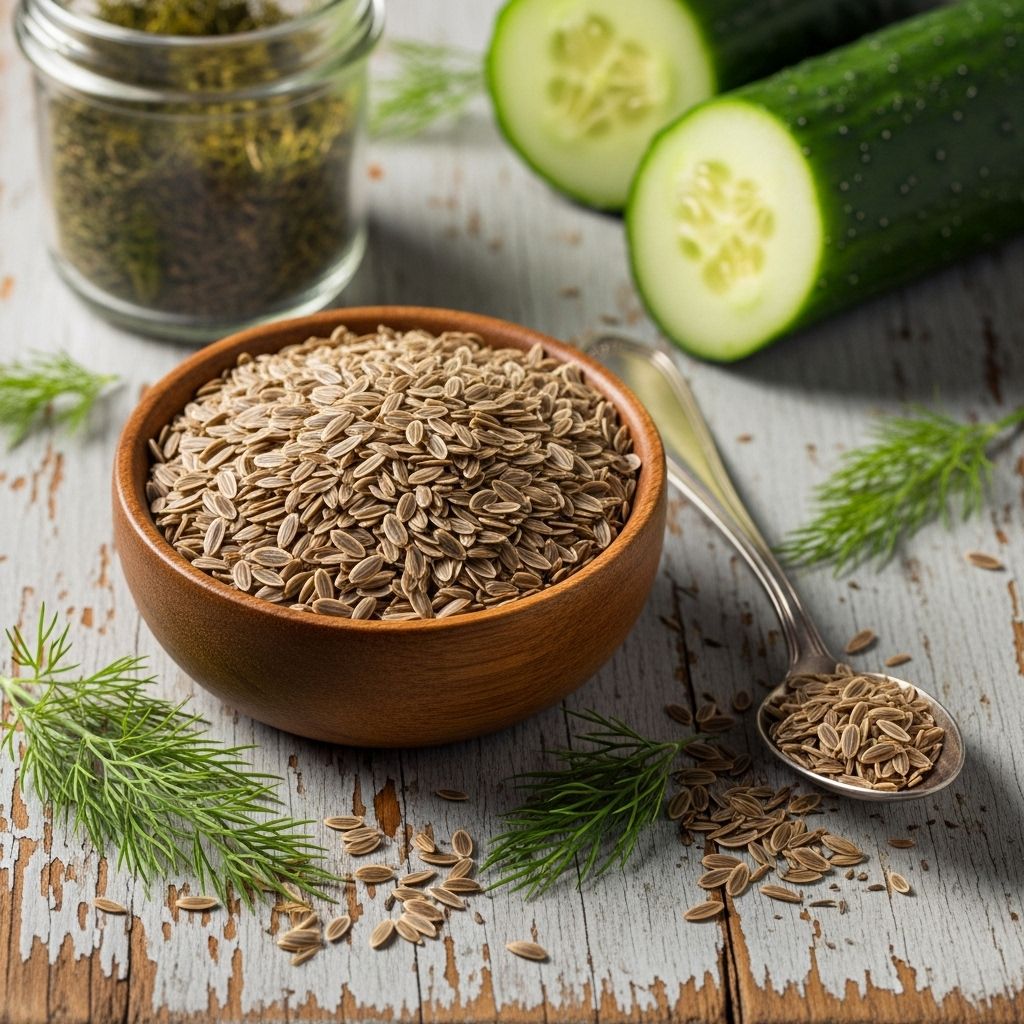Dill Seed: Flavor, Uses & Easy Substitutes
Unlock the Flavor and Versatility of Dill Seed in Cooking

Table of Content
Introduction | Flavor Profile | Culinary Uses | Easy Substitutes | Frequently Asked Questions
Introduction
Dill seeds are a staple spice in many cuisines, known for their unique flavor and aroma. They belong to the parsley family and are widely cultivated in regions like India and Pakistan. Both the leaves (dill weed) and seeds of the dill plant are used for culinary and medicinal purposes. The seeds, in particular, offer a strong, slightly bitter taste with hints of citrus and anise, making them a valuable addition to various dishes.
Flavor Profile
Dill seeds have a more potent flavor compared to dill weed, with notes of caraway and anise. The presence of carvone, a naturally occurring monoterpene, contributes to their distinctive aroma. This compound is also found in caraway seeds and orange peel oil, adding to the seeds’ unique flavor profile.
Culinary Uses
Dill seeds are versatile and can be used in numerous dishes to add depth and freshness. Some common uses include:
- Pickling Brines: Dill seeds are a key ingredient in traditional pickling recipes, especially for cucumbers.
- Seafood Dishes: They pair well with fish and seafood, enhancing the flavor of sauces and marinades.
- Bread and Baked Goods: Often used in bread recipes, such as rye bread, to add a unique flavor.
- Creamy Sauces: They complement creamy sauces, like yogurt-based sauces, well.
- Stews and Soups: Dill seeds can be added to stews and soups for a burst of fresh flavor.
Medicinal Uses
While dill seeds are primarily used in cooking, they have been used in traditional medicine for their potential digestive and anti-inflammatory properties. However, their medicinal use is less common compared to their culinary applications.
Storage and Handling
To preserve the flavor and aroma of dill seeds, it’s best to store them in a cool, dry place. Fresh dill weed should be stored in the refrigerator to maintain freshness.
Easy Substitutes
For those times when dill seeds are not available, there are several substitutes you can use:
- Caraway Seeds: These seeds have a similar flavor profile to dill seeds and can be used interchangeably in many recipes.
- Fennel Seeds: While fennel seeds have a stronger licorice flavor, they can be used in some recipes, especially those requiring a similar texture.
- Anise Seeds: Anise seeds can add a similar anise flavor, although they are sweeter and less bitter than dill seeds.
Comparing Dill and Fennel Seeds
| Feature | Dill Seeds | Fennel Seeds |
|---|---|---|
| Flavor | Grassy, slightly bitter, citrus undertones | Licorice, sweet, slightly bitter |
| Culinary Use | Pickling, seafood, bread | Baking, Italian cuisine, salads |
| Aroma | Carvone, citrusy | Licorice, anise |
Frequently Asked Questions (FAQs)
Q: Are dill seeds and dill weed interchangeable?
A: No, while both come from the same plant, dill seeds have a stronger, more bitter flavor, whereas dill weed is milder and fresher.
Q: How do I store fresh dill weed to keep it fresh?
A: Store fresh dill weed in the refrigerator wrapped in a damp paper towel or in an airtight container to maintain freshness.
Q: Can I use fennel seeds as a substitute for dill seeds in pickling?
A: While fennel seeds can be used, they have a stronger licorice flavor, so use them sparingly. Caraway seeds are a better substitute for pickling.
Q: What is the main compound responsible for the aroma of dill seeds?
A: The main compound responsible for the aroma of dill seeds is carvone, specifically the (S)–(+)-carvone isomer.
References
- https://www.greenlandfood.net/products/dill-seed
- https://myfoodjobrocks.com/dill/
- https://lettucegrowsomething.com/dill-seed-vs-fennel-seed-side-by-side-comparison/
- https://www.ispiceyou.com/blogs/news/exploring-the-aroma-why-dill-seed-smells-unique
- https://www.starwest-botanicals.com/product/dill-seed-organic/
- https://marionkay.com/product/dill-seed-whole/
- https://www.spiceandtea.com/products/dill-seed
- https://specialtyproduce.com/produce/Dill_6801.php
- https://tasterplace.shop/en-us/blogs/news/dill-aroma
Read full bio of Sneha Tete












